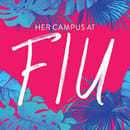When I was six years old, I adopted the habit of watching one of my favorite Disney movies every morning for the whole summer. I would grab a bowl of cereal and make the daunting decision to watch either “The Lion King” or “Hercules”; my mom had bought both from a guy working at the corner store. I would make a selection and insert the disk into my Disney princess TV set. Suddenly, I was immersed in a world of imagination where I was Simba, longing for adventure and putting an end to Scar’s malicious tyranny. If not Simba, I was Hercules: trying to find my place in the world while combating against Hades’s power-hungry vendetta. Disney movies have had an extreme impact on children and continue imprint positive morals/values as showcased by their protagonists. However, as I have gotten older, I have noticed a problematic issue with the portrayal of certain characters who represent the antagonist. Categorized as the “Queer Coded Villian” trope, it’s highly popularized by these major entertainment studios such as Disney.
The term “Queer Coded Villain” refers to the overall idea of a character who shares traits and actions synonymous with those of the queer community. Characteristics of a character are commonly associated with queerness or play on stereotypes affiliated with queerness. This trope can be seen with villains who are seen as “less straight” and creates the subconscious decision to associate them with the lgbtq+ community, despite no mention of sexual orientation in the story.
“Queer Coded Villains” can be seen with male characters who present more feminine personalities and vice versa. The use of verbal and visual indicators such as body language, dress appearance, vocal inflection, flamboyance, melodramatic personalities, and other stereotypical traits creates subconscious connotations of queerness. It seems that the only way a villain is expressed in these children’s movies is by giving them characteristics stereotypically similar to those in the lgbtq+ community and creating a narrative that being queer equates to being bad.
Ursula from “The Little Mermaid” is a perfect example of a “Queer Coded Villians” who is explicitly noticeable. First of all, her character was inspired by the drag queen Divine, who is represented by exaggerated makeup, a large figure, and a deep voice. This drag queen-esque villain is written for an out-dated patriarchal heterosexual story and is seen as the malevolent evil trying to destroy a happy ending.
Scar from “The Lion King” also has exaggerated facial features and is very dramatic with a slender physique in comparison to his hyper-masculine brother Mufasa. Mufasa stands tall and is the head of the household while Scar is sarcastic and sassy in a way where the intention may be to emasculate him.
Jafar from “Aladdin” and Hades from “Hercules” also share exaggerated makeup and appearances compared to their hyper-masculine counterparts. Jafar is perfectly groomed, carries himself with sophistication and never gets his hand dirty. Hades also wears a gown-like toga and serves as the stereotypical “gay best friend” to Meg.
While villains are necessary for any story as they help complete a hero’s journey, villains portraying queer traits that glorify masculinity and traditional gender norms seem lackluster. Lgbtq+ audiences deserve more than only seeing themselves in the villains who always end up being disposable in the hands of heterosexual stories. There is a large demand to see more queer stories with queer leads instead of this harmful idea of implementing queer traits onto villains and hoping that is enough



